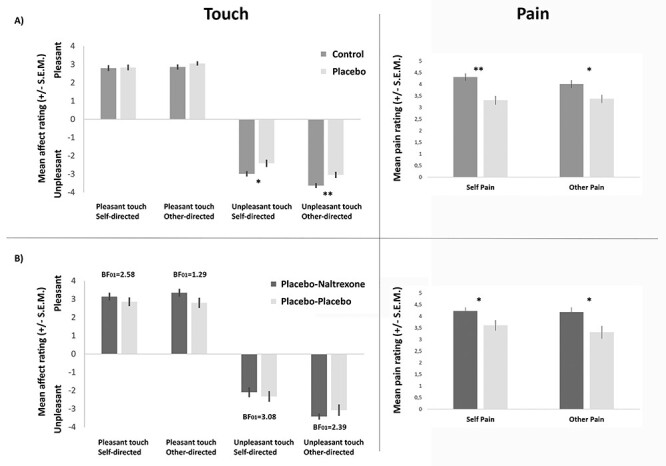Figure 2.

Behavioral results of the two experiments, showing that while placebo analgesia reduced unpleasantness of touch ratings, this was not underpinned by an opioidergic mechanism. Left panels: touch data. Right panels: pain data. (A) fMRI experiment (NControl/Placebo = 52/49): ratings of pleasant touch revealed no group differences, while the unpleasantness of both self- and other-directed unpleasant touch was significantly reduced in the placebo group, similar to pain and pain empathy. (B) Psychopharmacological experiment (N = 25/25): administration of the opioid antagonist naltrexone had no influence on ratings of affective touch in any of the four conditions (all P-values > 0.123), while it increased pain and empathy for pain. Asterisks (*P < 0.05, **P < 0.01) mark significant planned comparisons (independent samples t-tests, see text for detailed results). BF01 values are BFs in favor of the null hypothesis (i.e., no effect of naltrexone).
